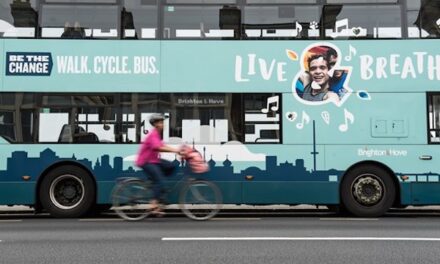Londoners keen to get behind the wheel of an electric car could save more than £6,000 per year by joining a car club instead of buying or leasing one, new research has revealed.
It found that car club membership gives people in the capital access to the latest electric vehicles (EVs) at a fraction of the cost associated with ownership.
The analysis was carried out by national shared transport charity Collaborative Mobility UK (CoMoUK), which is dedicated to the social, economic and environmental benefits of shared transport such as car clubs.
With more and more drivers making the switch from petrol and diesel cars to EVs, the organisation stressed that car clubs were hugely more affordable than ownership.
Such schemes can also give people who do not currently own a car – and do not intend on buying one – access to the latest EVs in a convenient and flexible way.
Previous CoMoUK research has also shown that most car club users drive less often overall, with membership also leading to other benefits such as a more active lifestyle.
Each car club vehicle in London also replaces an average of 29 private cars, as well as boosting public transport use and active travel options such as walking and cycling.
The research compared the costs of car club use with ownership and leasing for three common types of EV sold in the UK.
These were a new Tesla Model Y – the most frequently sold EV in the UK in 2022 – a new Renault Zoe and a five-year-old used EV such as a Nissan Leaf.
The analysis found that on average, using an EV through a car club saves people in London £5,573 per year compared to owning an EV that is less than three years old.
When it came to leasing – an increasingly popular option for car buyers, especially those trying out EVs – the average saving from using a car club was £6,167 per year.
The figures are based on UK Government data showing that on average, Londoners make 155 car trips per year as a driver, with the average trip taking 24 minutes and covering 7.5 miles.
For 155 trips of this duration and distance, the annual costs for using a car club EV start at around £1,389, including insurance and fees for charging and mileage.
The costs of EV ownership vary widely depending on brand, model and usage, but new cars in the lower price range are available from around £30,000.
The costs of car club membership only exceeded EV ownership for those buying a five-year-old used model, due to the slower depreciation of cars after this period.
However, this does not take into account that all car club EVs in London are less than five years old, and that most car club members drive much less frequently than the London average, taking five or fewer trips per year.
When less frequent car use was factored in, even buying a five-year-old used EV worked out as £1,156 more expensive than access through a car club.
The research comes after a survey by the Department for Transport highlighted how people on lower incomes are far less likely to consider buying an EV than their wealthier peers.
The National Travel Attitudes Study, published last month, found that 57 per cent of people with a household income of £50,000 or more are planning to make their next car an EV.
Those in the next income bracket down (£35,000 to £49,999) indicated similar, but the figure dropped to only 41 per cent among people in households with an income of under £15,000.
Richard Dilks, chief executive of CoMoUK, said:
“Our research shows that Londoners who join car clubs are not only helping to cut pollution and road congestion, they are also saving thousands of pounds a year compared to buying or leasing their own EV.
“Affordable access to a growing fleet of green vehicles is one of a number of advantages enjoyed by car club members.
“Our previous research has also shown how each car club vehicle in London takes 29 private cars off the road. This is equivalent to removing more than 100,000 cars from the capital’s streets, giving everyone more space, better air quality and lower city-wide emissions.
“Car club members also use public transport and walk or cycle more than Londoners in general.”






